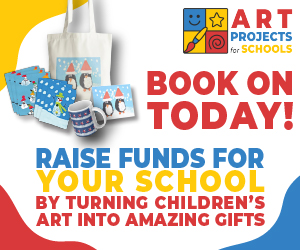The funds raised by a PTA are usually used to buy resources and experiences that enrich pupils’ education, but how do you deciding where to allocate the money?
Your constitution is key
Every PTA should have a constitution in place. It acts as a guidance document and should state the aims of your association. Most PTAs have two key objectives: to provide resources or experiences which enhance the educational experience of pupils and to cultivate relationships between school staff, parents and the wider community.
Having a detailed constitution can be a great benefit should any disagreements arise between school staff and the PTA committee. If your constitution was drawn up a while ago, it may be worth reviewing it. If your association is a registered charity, you should consider how you can best meet your core charitable purposes.
Is the money the school’s or the PTA’s to spend?
As a separate entity to the school, the PTA can spend its money as it sees fit, as long as it’s in line with the constitution. It’s important for a PTA to take ownership of its funds and work with the school to decide what to buy, rather than handing over a cheque to be incorporated into general school funds. Your committee should ensure the money is spent appropriately and in line with what your members and donors would expect. As the PTA is raising money for the benefit of the school, it’s essential to work with them to achieve this. Any suggestions made should be considered and approved by both the PTA and the head teacher. Schools and associations work in different ways when it comes to agreeing on how to spend PTA funds, but it’s vital you work together to decide on a strategy that suits both parties. Your constitution holds the answers to managing any disagreements between school staff and the PTA committee, so it’s important to keep it up to date and relevant.
Do we have to fulfil all requests the school makes?
There is absolutely no obligation to accept all funding requests made by the school. As money is raised by the PTA, the PTA has the right to decide how it is spent, bearing its constitution in mind.
Even though you don't have to fulfil requests, the PTA does exist to support the school, so it should be with good reason that you turn a request down. It could be that the request doesn’t meet the criteria laid out in your constitution, for example, an initiative that benefits only a minority of pupils (eg a single-class workshop), or something that you believe should be covered by the general school budget, such as building maintenance.
Ultimately, it’s down to the individual PTA to decide whether to fund the item or not.
What should you be funding?
What defines PTA spending varies from school to school. Your constitution will outline exactly how you should be operating and what your primary objectives are, and therefore where you spend your funds.
Generally, money raised should benefit all, or the majority of children, whether this is immediate, eg playground equipment, or over time, eg Year 6 teaching resources that all children will use as they move up the school. Benefiting a minority, eg sports kit that only a handful of children will use, may go against the terms of your constitution.
PTA funds should also benefit the children of the parent donors – people give money with the impression that it will help their child – so keeping funds hanging around in the PTA bank account could alienate parents. A simple way to ensure funds reach all pupils is to budget a set amount for each department or year group.
Some constitutions state you can’t fund anything curriculum-based, while others allow this as any support of the school fulfils their cause. You may want to consider whether, in light of the economic climate, your PTA needs to be sensitive to new pressures the school is under.
How do we collect suggestions?
As the funds are raised with the intention of supporting the school, the school is the best place to begin when deciding what to buy, as they are best placed to know what is needed. Provide regular reports on the PTA funds available, as this will enable staff to suggest items that are realistically within reach.
Ask teaching staff to provide a written wish list each term, as teachers will know which resources will be of most benefit. But there should also be the opportunity for the committee, parents and pupils to offer suggestions too: provide a suggestion box somewhere that's accessible to all, eg the school reception area; set up an email address for suggestions so people can submit requests electronically; create a bespoke form asking for details of each resource (including price) and the benefits it offers to pupils; ask the school council of pupils for their input.
Use newsletters and social media to remind everyone to submit requests in the run-up to your committee meeting, so everyone has an opportunity to make a suggestion.
How do we decide whether to accept or deny a request?
Discuss each suggestion at a committee meeting, considering them in line with your constitution to see if it’s something you can cover. Accepted items should be agreed mutually between the PTA and head teacher, ideally at the same meeting. All requests and suggestions should be voted on by the committee.
For rejected items, ensure you have sound reasoning for why it can’t be purchased. In some cases, a compromise can be reached, for example, instead of paying for a workshop for one class, offer workshops to every class, funded partially by the PTA and partly by the school. If you’re unsure about whether to approve a suggestion or are split between a number of ideas, try surveying the parents and teachers to find out their opinions on the idea.
Should we have a contingency fund?
While it’s prudent to keep some funds in reserve, bear in mind that the parents who helped you raise that money will want to see their children reap the benefits. Agree on a realistic policy for reserve funds.
There’s no set amount any PTA should have in its bank account, but there are things that need to be considered: you’ll need to make sure you have the funds to cover any long-term subscription commitments and bear in mind seasonal obligations, such as Christmas treats or leavers' gifts.
If you have any activities planned, take into consideration how much they will cost, and ensure you have enough to cover them. Avoid making any purchases that will wipe out your funds. It may be that you’re happy to fund an item fully but can't afford to yet, in which case you could finance it gradually over the year, or longer. You could agree with the school to part-fund the item, or create a fundraising drive based around that single project to boost support.
If you’re hoping to raise money for a specific project, announce it to parents and local businesses – you never know where support may come from, and if you don’t ask, you don’t get! Don’t rule out big projects because the money isn’t there. There are an estimated 10,000 trusts and foundations in the UK giving over £2 billion a year.
Get spending!
Money shouldn’t be left hanging around in the bank account for too long, as parents and donors want to see the money they gave being spent to benefit the children. Purchases will affirm the PTA’s importance and impact on the school while boosting awareness of your cause.
Clear targets
Having targets before the money is raised can encourage donations, so bear this in mind for the future and agree on a wish list in advance of your fundraising events. Ensure that the head teacher approves all items before you begin fundraising for them.
If you have advertised an activity as fundraising for a specific item, any funds raised must go towards it, both to stay in line with your constitution and to satisfy the expectations of your donors.
Top PTA purchases
Here are some of the most popular PTA purchases to kick-start your conversations.
- Technology – eg coding equipment, smart boards, iPads, laptops, cameras, or video cameras
- Subscriptions – these could be to online resources such as MyMaths or Reading Eggs to use in the classroom and at home, or magazine subscriptions to add to the class library
- Areas – larger projects to consider are a library transformation, a kitchen, an outdoor classroom, or a forest school
- Playground – trim trails, play equipment, and outdoor gyms all encourage children to get active
- Experiences – learning is about more than just material items, so consider first aid workshops or field trips to local areas and attractions
- Extra-curricular – additions such as music equipment (eg ukuleles, ocarinas), board games, books, and art materials can be used in both after-school clubs and classroom activities
- Leavers’ items – eg hoodies, yearbooks, or parties for Year 6 pupils.
Further reading
- Restricted funds FAQs find out about restricted, designated, and unrestricted funds
- Read our introduction to grant fundraising and check your local PTA page for smaller grant giving trusts
- For the latest and greatest resources for schools, search our online supplier directory







